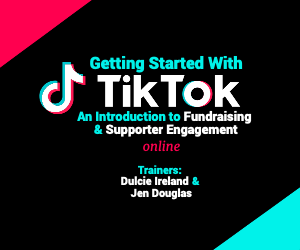Why a little revolution is a healthy thing

I recently attended the south east division of the Institute of Fundraising conference and have to say I was really rather impressed with the overall direction of the day.
Let’s face it, thanks to various governance and legacy worries, charities aren’t always renowned for maverick or even innovative behaviour. The theme of the conference was ‘searching for pot of gold’ but the undercurrent from each of the sessions was about thinking innovatively to change things to get better results.
This wasn’t about change for change’s sake, of course; more an encouragement not to rest on our laurels and to challenge ourselves and our organisations to continue to improve. The pace of change of technology and the resultant access to information alone makes this sentiment hugely important.
Advertisement
For example, much has been written about the importance of attracting younger donors and supporters – the so-called generation Y. I’m over 30 so this is tough for me but just imagine an entire generation of young people who have never known life without the internet….
Tony Elischer, Managing Director of THINK Consulting Solutions, outlined a manifesto for revolution to help fundraisers think differently about the world we will all be operating in tomorrow. Some of the most interesting points included:
- Open the window – look for ideas, best practice, information or research outside of the standard charity approach which will help you
- Break the rules – take these ideas, make them fit your purpose and do it! As long as you ensure you learn from the experience, you can only win
- Believe – the majority of fundraisers believe passionately in the cause they support so overtly channel your passion through your communications and activities.
- Go to the edge and look over – it’s OK to take calculated risks as in the twenty first century, speed and agility in developing your ideas and getting them out into the wider audience is key to your success
- Think digital – new technology means audiences can connect directly with charities like never before so be ready to listen and to exploit what you hear to your advantage. Offer modern ways for people to engage with you, preferably driven by their preferences and you maximise your ability to reach a much grater audience
- Collaboration – get rid of the internal silos! Your departments will work much more effectively when focused on the same goals instead of striving to achieve their own, smaller objectives
- Keep it simple!
In a previous life, I spent many years working in the commercial sector and these suggestions would be a standard mantra for sales and marketing teams up and down the country. So why not in the charity world?
But let’s not criticise ourselves unduly. There are some great examples of how fundraisers are thinking differently to inspire supporters in today’s world. Save the Children is already embracing new digital technologies with over 6,800 clips on You Tube alone, each extolling the benefits of their projects and providing tangible evidence for fundraisers to use.
If you haven’t looked at stuffyourrucksack.com before, take a look. These guys looked at the plethora of travel guides, advice websites and tourist / traveller services and decided to try and ‘look over the edge’ and offer a new service to tap into this zeitgeist. The service is an information portal for travellers which outlines what things can and should be taken to various locations to support local charities and communities, based on local needs.
The service is two-way and invites travellers to update the databases as they move around the globe to benefit other folk who want to offer something to the communities they will visit. All charities are also invited to contribute so they effectively get to publish their wish lists to an international audience as well as benefit from some free exposure. How is that not a win: win?
Revolutionary thinking isn’t restricted to technology, of course. Last month, a man from Wisconsin hollowed out a giant pumpkin (over 760 lbs!) and is planning to paddle it down the Wisconsin River for 150 miles to raise funds for local causes. The innovative nature of the idea plus the simplicity of the adventure has generated massive support for the campaign as it is easy to talk about and easy to picture. On Google this effort has registered over 1,000 search entries, gained coverage from five separate US TV channels, dozens of local press mentions and several national newspapers across the English speaking world.
However, my own personal favourite is the example of the Chilean prostitute, Maria Carolina, who recently auctioned 27 hours of sex for the local version of Comic Relief, raising over $4,000 in the process!
Whilst the last example may be pushing the maverick thinking a touch too far for most of the Boards and Trustees out there, it does show what fundraisers can do if we can inject just a little revolution into our day.
What fundraiser wouldn’t want this kind of coverage or tangible evidence to encourage supporters to continue to donate in these tough times?
Also by Kevin Baughen
- Chugging, Irresponsible Research and Old-school Nepotism (4 December 2008)
Kevin Baughen is founder of Bottom Line Ideas, is a speaker for Cancer Research UK and a long-time advocate of blurring the lines between best practice across the charity and commercial worlds.



